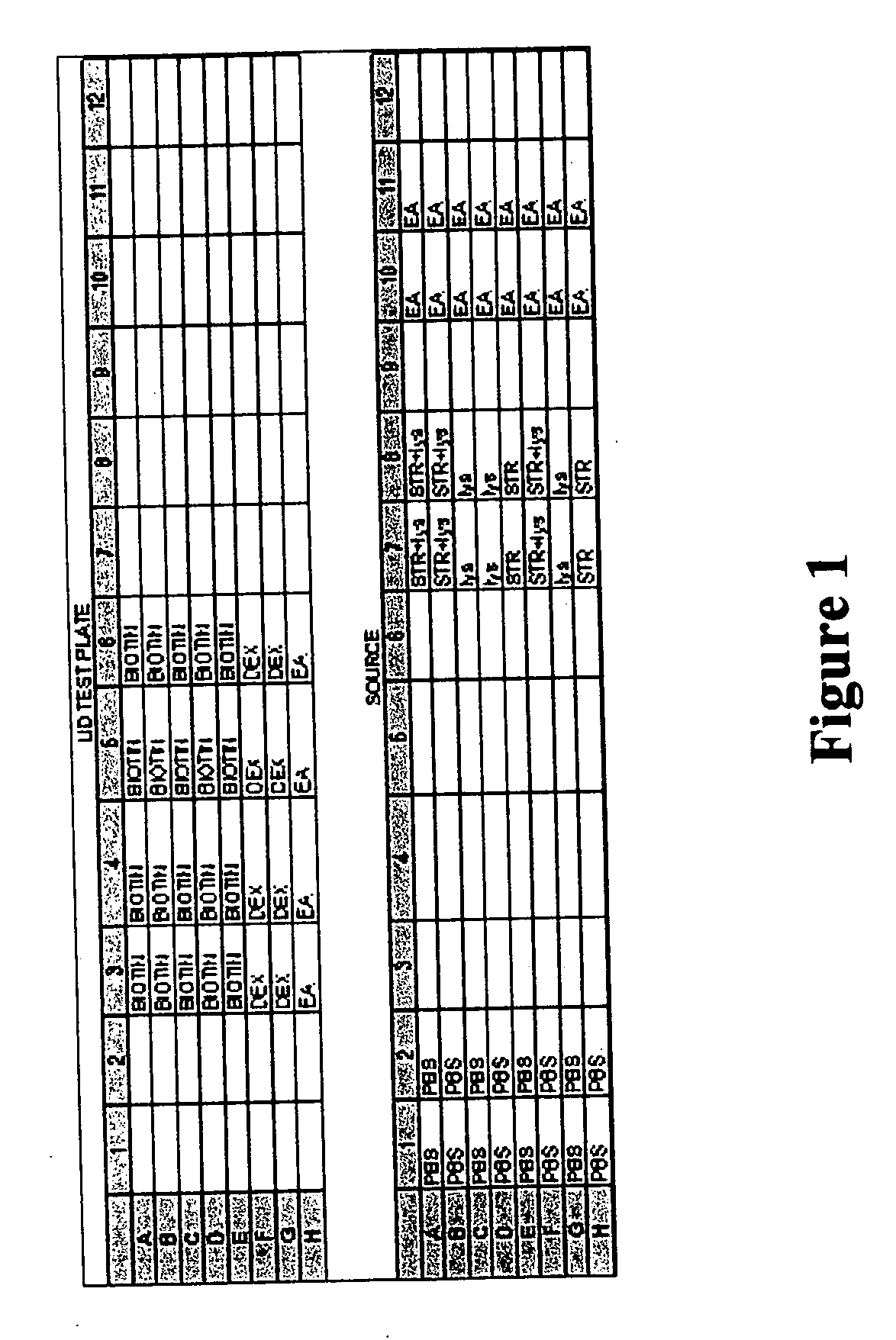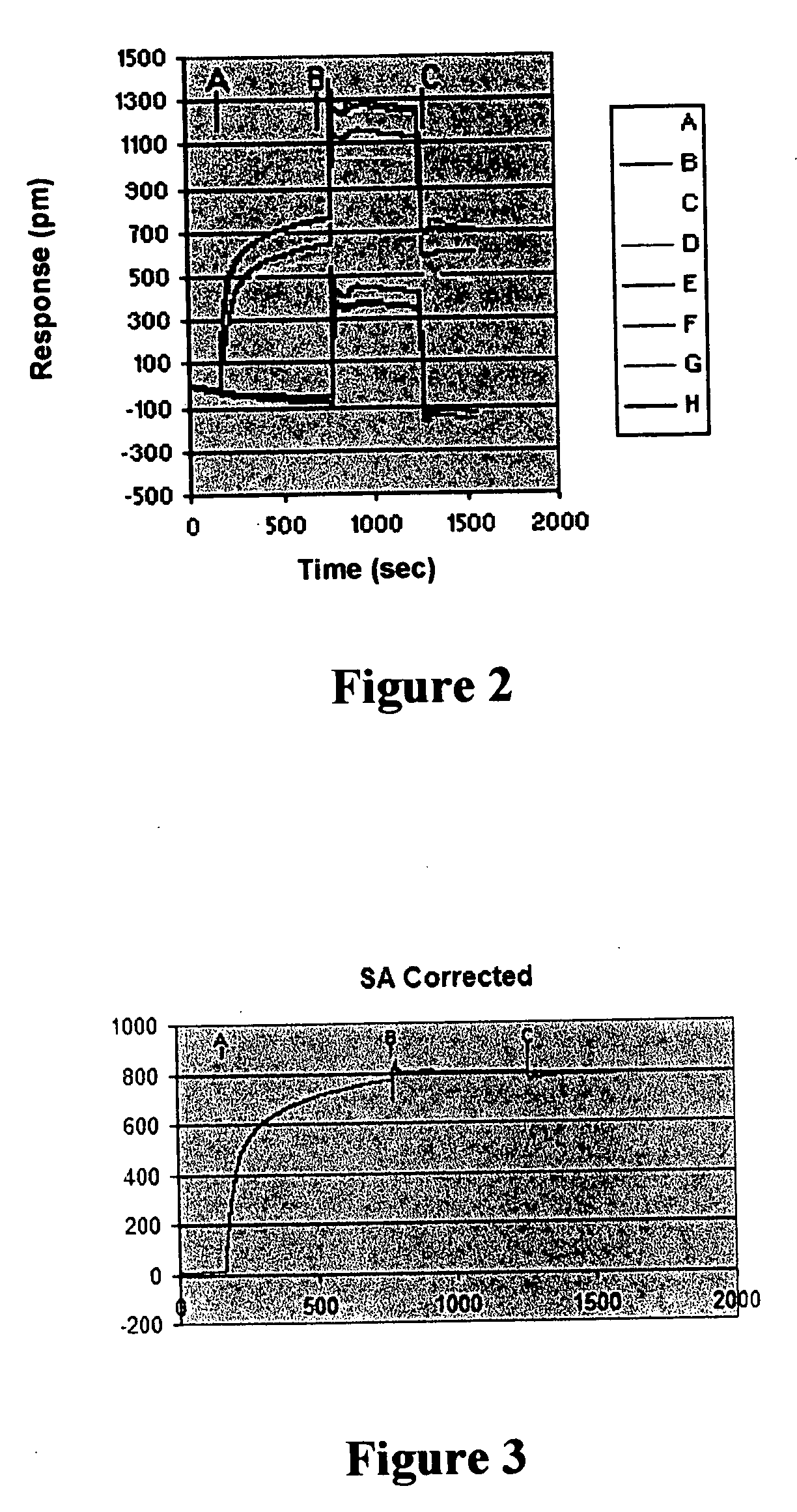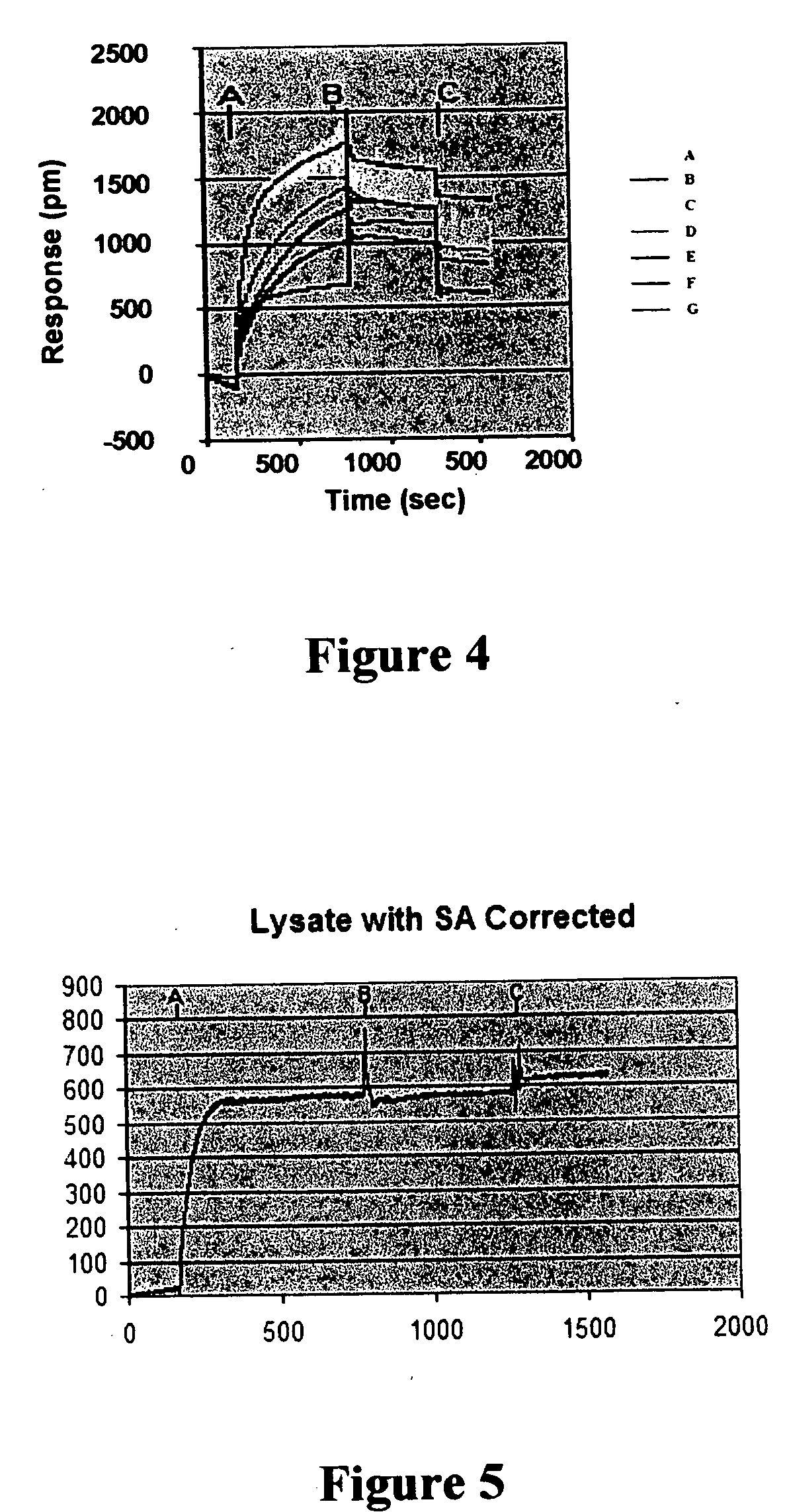Label-independent detection of unpurified analytes
a technology of unpurified analytes and labels, applied in the direction of fluorescence/phosphorescence, instruments, material analysis, etc., can solve the problems of time-consuming and laborious processes, labeling process may also be expensive or time-consuming,
- Summary
- Abstract
- Description
- Claims
- Application Information
AI Technical Summary
Benefits of technology
Problems solved by technology
Method used
Image
Examples
example
[0061] A label-independent detection (LID) system developed by Corning Inc. was used to evaluate interactions between unlabeled streptavidin and immobilized biotin. This LID system is comprised of a multi-well optical reader and a disposable microplate (e.g., a 96- or 384-well microplate). Each well of the microplate contains a grating-coupled waveguide for evanescent field sensing. The sensing surface has a surface chemistry layer allowing for attachment of molecules that contain primary amine groups (e.g., biotin-amine). As streptavidin or other analytes of interest bind to the sensing surface, the refractive index at the surface is changed. An optical mode propagates and senses the refractive index changes close to the sensing surface. Only light that is “resonant” is strongly reflected, and the exact wavelength of the resonance is a sensitive function of the refractive index at the surface of the sensor.
[0062] In a typical operation, a baseline read of the microplate is first e...
PUM
| Property | Measurement | Unit |
|---|---|---|
| refractive index | aaaaa | aaaaa |
| molecular weight | aaaaa | aaaaa |
| molecular weight | aaaaa | aaaaa |
Abstract
Description
Claims
Application Information
 Login to View More
Login to View More - R&D
- Intellectual Property
- Life Sciences
- Materials
- Tech Scout
- Unparalleled Data Quality
- Higher Quality Content
- 60% Fewer Hallucinations
Browse by: Latest US Patents, China's latest patents, Technical Efficacy Thesaurus, Application Domain, Technology Topic, Popular Technical Reports.
© 2025 PatSnap. All rights reserved.Legal|Privacy policy|Modern Slavery Act Transparency Statement|Sitemap|About US| Contact US: help@patsnap.com



